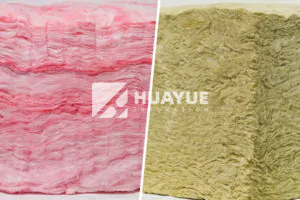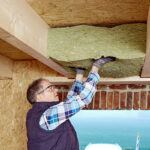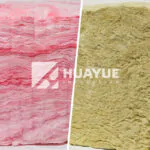Is Rock Wool Insulation the Best Choice for Basement Insulation Needs?
Rock wool insulation promises excellent thermal and fire resistance, which is good for basements. Questions about its downsides and practical performance keep popping up.
Rock wool insulation delivers solid fire, moisture, and sound protection in basements. It resists mold and does not support combustion. Some challenges include cost, potential for dampness, and rodent issues depending on installation and surroundings.

People want basements to be dry, comfortable, and energy-efficient. Basements usually face cold, dampness, and pest threats. When choosing insulation, I look not just at the best technical specs but also at what works for long-term comfort and safety. Let’s break down each concern.
What are the disadvantages of ROCK WOOL insulation?
Rock wool solves a lot of basement problems, but possible downsides matter for long-term use. Cost, moisture response, and handling issues always come up.
Rock wool insulation has higher costs, can get damp in some cases, and may need special care during installation to reduce airborne fibers.

Rock wool is made from melted basalt rock. It feels fibrous, and it is easy to cut and fit into basement walls. The cost is notably higher than fiberglass or foam options. Installation can release tiny fibers into the air, so it’s best to wear protective clothing and masks.
The fibers can become loose during installation. This is uncomfortable for workers if they do not take safety measures. Some people find the higher cost a big barrier. The price makes it less common in simple home renovations. Disposal of scraps or old rock wool needs some care, because it does not break down quickly in landfills.
A table to compare main disadvantages:
| Disadvantage | Short Description | Basement Impact |
|---|---|---|
| Higher cost | Costs more than fiberglass/foam | Mostly affects budget |
| Fiber irritation | Dust and loose fibers | Can be uncomfortable to install |
| Moisture sensitivity | Can stay wet in some conditions | Needs proper vapor barriers |
| Disposal concerns | Not biodegradable | Waste management needed |
I once installed rock wool in a small basement utility room. I spent more time and money than usual because the product needed special vapor barriers and careful cutting. My hands felt itchy after, so I wore better gloves for the next project. This shows why knowing the downsides matters before choosing rock wool.
What is the best insulation to use in a basement?
The “best” insulation balances moisture control, fire resistance, and ease of installation. Rock wool is a good option, but other materials also offer good results.
Closed-cell spray foam, followed by rock wool, provides excellent moisture protection, high R-value, and mold resistance for basements.
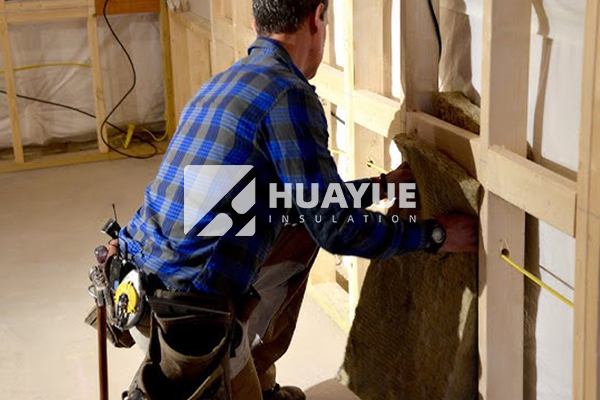
Closed-cell spray foam creates a continuous barrier that blocks air and vapor. It helps prevent water infiltration, stops condensation, and insulates well even in cold, damp conditions. It bonds to concrete and fills all gaps.
Rock wool comes next, mainly for its high fire rating, resistance to mold, and sound absorption. In places with more humidity or risk of water leaks, spray foam is often better, but rock wool is still a great choice for areas with less severe moisture.
Here’s a table comparing major basement insulation types:
| Insulation Type | Moisture Protection | Fire Resistance | Soundproof | Installation Ease | Cost Level |
|---|---|---|---|---|---|
| Spray Foam | Excellent | Good | Fair | Professional | High |
| Rock Wool | Good | Excellent | Excellent | Medium | Medium-High |
| Fiberglass | Fair | Fair | Good | Easy | Low |
| EPS/XPS Foam Boards | Good | Fair | Fair | Medium | Medium |
My experience tells me that basements with low moisture can use rock wool safely and effectively. Areas with high humidity or ground water benefit more from closed-cell spray foam. When I have doubts, I always run humidity tests and seal all leaks before choosing the insulation method.
Will mice nest in ROCK WOOL insulation?
Basements are prone to pests. Choosing insulation that does not attract rodents is very important for long-term value.
Rock wool insulation does not offer food or easy nesting material for mice, but gaps or loose installation may still allow rodents to settle nearby.
Rodents like places that are warm, safe, and easy to dig into. Rock wool has a firm texture, and mice cannot easily chew through it. Unlike soft fiberglass or loose foam, rock wool resists tunneling. However, if installation leaves open gaps, rodents can still seek space between insulation layers and walls.
I have come across some older basements where pests went behind the insulation, making nests in spaces not sealed or inspected often. It helps a lot to add rodent-proof barriers, use tightly fitted panels, and check for cracks in foundation walls before installing insulation.
Here is a brief comparison:
| Insulation Material | Mouse Nest Risk | Notes for Basement Use |
|---|---|---|
| Rock Wool | Low | Best if installed with no gaps |
| Fiberglass | Medium | Mice burrow in soft fibers |
| Spray Foam | Very Low | No food, hard surface |
I always inspect for entry points before adding any insulation in basements. Rock wool itself is not inviting, but any basement with holes or breaks in the wall can turn into a pest haven, regardless of insulation type.
Does ROCK WOOL get damp?
Managing dampness in basements is critical. We need insulation that can handle wet conditions while keeping the area safe and healthy.
Rock wool repels water vapor but can trap bulk water if exposed. It needs protection behind a good vapor barrier to avoid long-term damp problems.
Rock wool fibers are water-resistant by nature, but a flood or high humidity can let water collect inside. Wet rock wool loses insulating value until it dries. Mold does not grow easily on rock wool, but musty smells and water damage can happen if you leave it wet for too long.
Good installation practice means layering with waterproof vapor barriers and sealing all corners. If you expect frequent leaks, consider insulation types that don’t absorb any water, like closed-cell spray foam.
Here is a comparison of damp resistance:
| Insulation Type | Vapor Resistance | Bulk Water Resistance | Risk of Mold | Notes |
|---|---|---|---|---|
| Rock Wool | Good | Fair | Low | Needs vapor barrier |
| Fiberglass | Medium | Poor | Medium | Avoid in wet areas |
| Closed-cell Spray | Excellent | Excellent | Low | Best for damp basements |
| EPS/XPS Foam | Good | Good | Low | Use with waterproofing |
In my work, I saw one basement project fail. Water seeped into a poorly protected wall, causing damp rock wool and cold spots. We fixed it by stripping out wet panels, adding waterproof layers, and sealing all openings. That’s why I always recommend thorough checks and a layer-by-layer approach for insulation.
Conclusion
Choosing basement insulation is about balancing fire safety, moisture control, and ease of installation. Rock wool fits many needs with some careful planning and solid prep.
You may also be interested in:
Ready to Get Started?
Get in touch with our experts for personalized solutions tailored to your needs.
Get Free QuoteLatest Articles
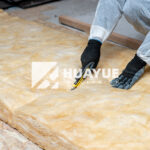
How to Cut Fiberglass Insulation Easily and Safely?
Nov 21, 2025

Does fiberglass insulation burn?
Nov 19, 2025
Let's Work Together
Ready to take your business to the next level? Get in touch with our team of experts and let's discuss how we can help you achieve your goals.
Get Free Solutions

